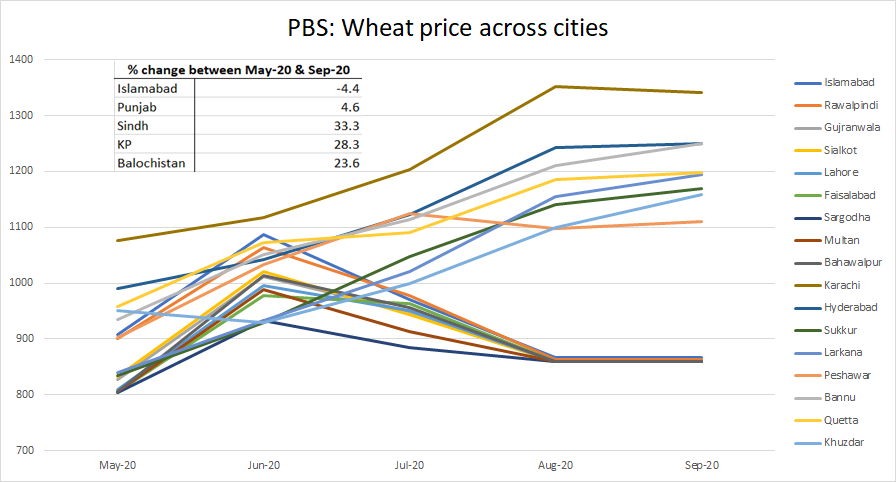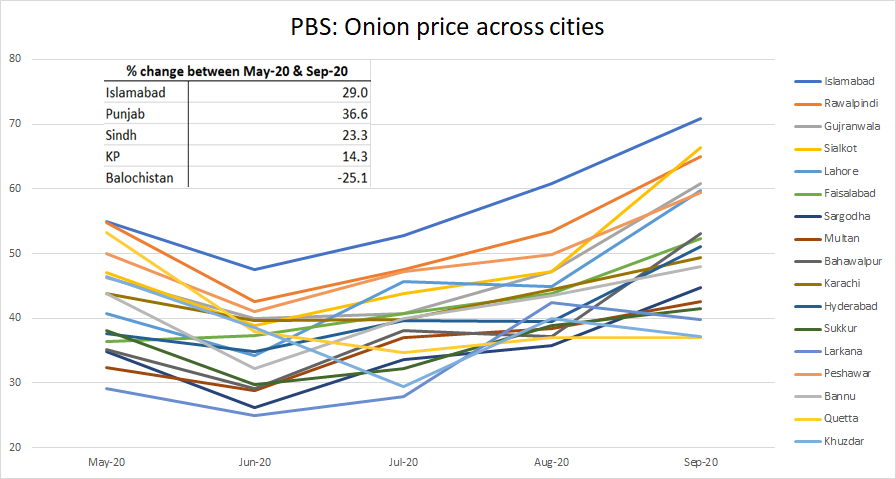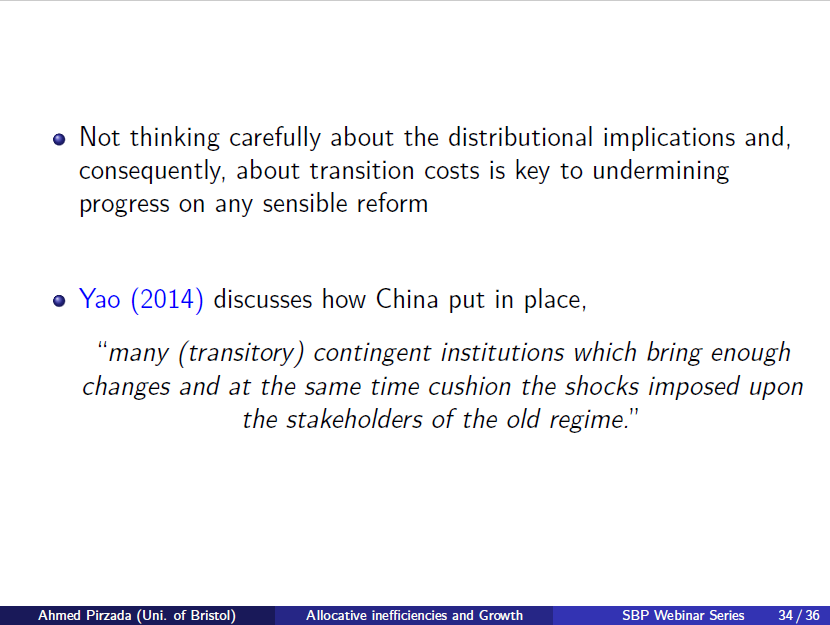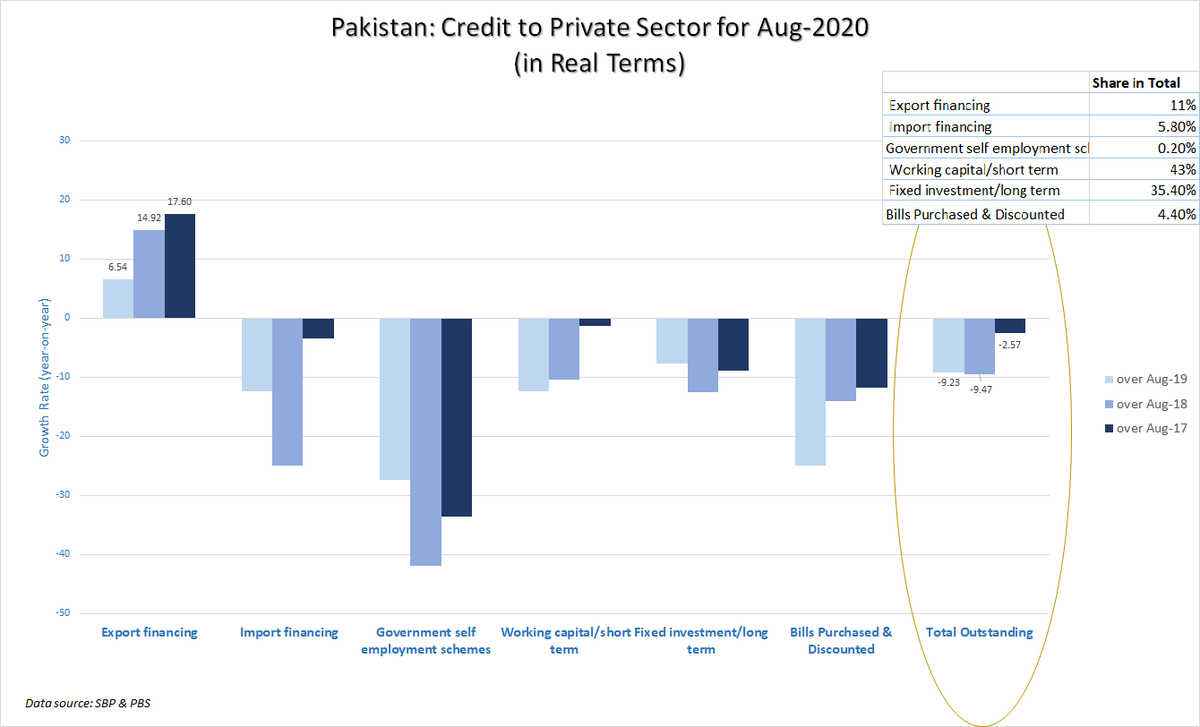
(1/n) The previous thread discussed supply side factors & focused only on food infl. But wat about the demand side? There is a lot happening here as well. After remaining stable around 10% for about 2 yrs, growth rate of money supply increased from 11% in Dec-19 to 16% in Oct-20. 
https://twitter.com/ajpirzada/status/1317211637535920139

(2/n) To wat extent such a sharp increase in money supply will affect inflation is not immediately obvious. This will partly depend on wat ppl decide to do with it & how the SBP will respond to it. But before this, lets look at why money supply has increased so much since Dec-19.
(3/n) While money growth started increasing from Dec-19, most of the increase was during the post-COVID period. Money growth increased from 11% to 13% during pre-COVID months and from 13% to 16% during post-COVID months (black line).
(4/n) Almost all of the increase in growth in money supply during pre-COVID months was driven by the increase in growth rate of bank deposits. The deposit growth increased from 9% in Dec-19 to 12% at the end of March (yellow line).
(5/n) The only interesting thing here is that the economy had started to recover from around Dec-19. Businesses were expecting interest rates to start coming down in near future. In fact, interest rate on 1 year maturity bond was lower than that on 3 or 6 months bond. 

(6/n) As a result of this improvement in near-term borrowing conditions, the declining trend in private sector credit growth reversed in Jan-20. Increase in credit growth also meant that deposit growth increased as well. But then COVID hit! 

(7/n) While only growth in bank deposits increased during pre-COVID period, growth in both bank deposits & currency in circulation (CiC) increased during post-COVID period. First, growth rate of CiC increased from 15% in March-20 to the peak of 13.6% at the end of May (blue line) 

(8/n) There could be several reasons for this. For example, most cash payments under Ehsaas emergency cash program were made during the months of April, May & June. Another reason could be people withdrawing money from banks to survive the lockdown. And possibly more ...
(9/n) Second, growth in bank deposits also increased from 12.2% at the end of March-20 to the peak of 16% in May-20. This sharp increase in growth rate is most likely due to liquidity injections by the SBP during this period.
(10/n) Postponement in debt repayments, new loans to address COVID related liquidity crisis, and government borrowing most likely contributed towards this increase in growth in bank deposits.
(11/n) Today, while the growth rate of Money Supply is lower than in the middle of COVID crisis, it is still higher (at 16%) than before. What will happen to this excess money in the system (both cash and bank deposits) is key to how inflation will behave in months to come.
(12/n) If ppl decide to spend it as frequently as they would in normal times (i.e. velocity of money normalises), then infl outlook will worsen. But if ppl hold on to it in fear that COVID/lockdown may return or use it for debt repayments, infl may not be an immediate concern.
(13/n) In any case, SBP shud watch out for how this excess liquidity will play out once normality returns. Experience of adv. economies is so far comforting in tht inflationary pressures hav not appeared despite increase in MS. But these countries r structurally quite different!
(n/n) Hopefully these two threads would have given us a better understanding of how different factors - both on the supply and demand side - may have affected the economy in recent months and what this means for both current and future inflation.
P.S. Thanks to @samigodil for providing the chart in (5/n). Also, growth rates in all figures are in terms of year-on-year.
• • •
Missing some Tweet in this thread? You can try to
force a refresh











